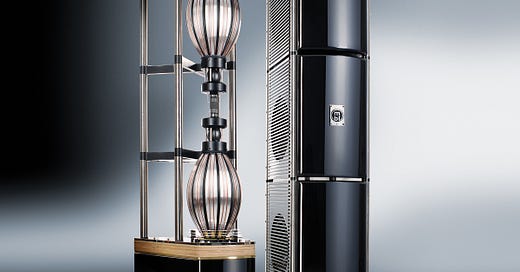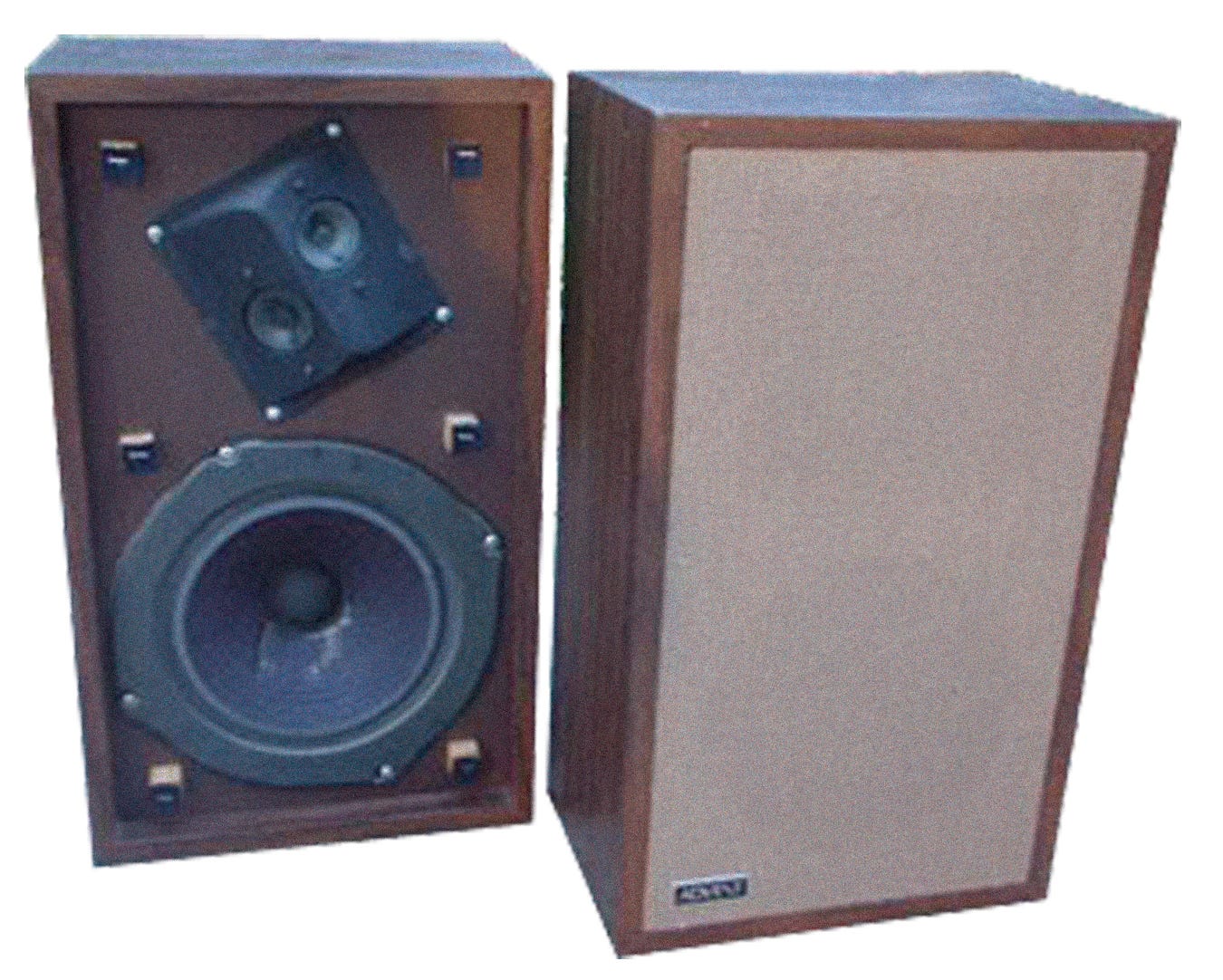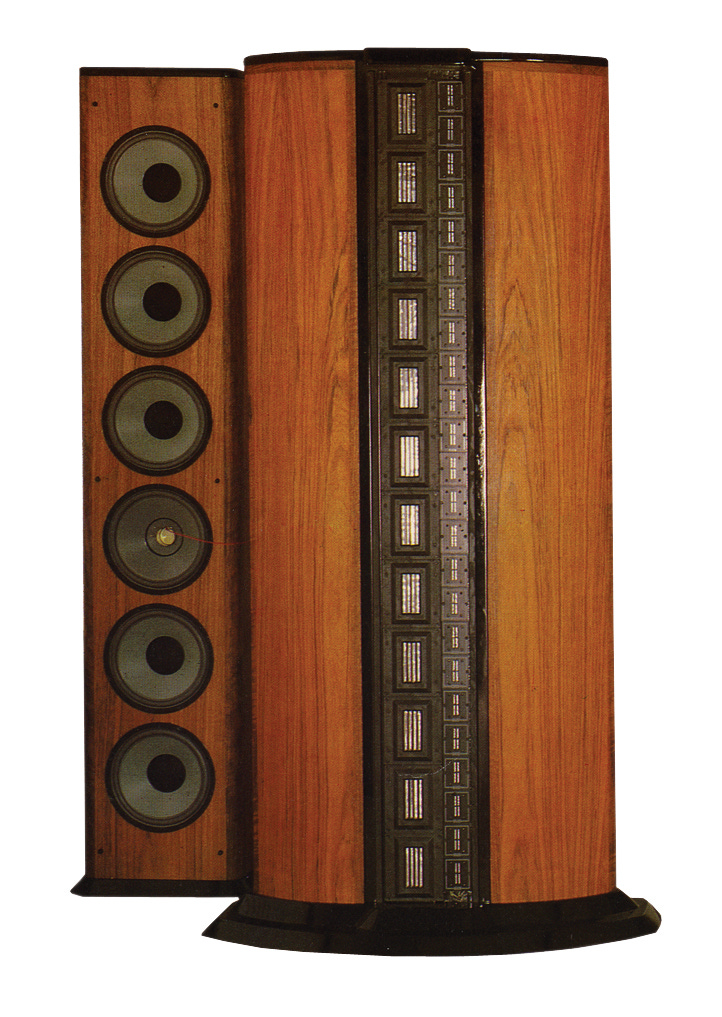Over the years our editorial staff has hotly debated just which loudspeakers have had the greatest impact on high-end audio. These are not necessarily the best-sounding speakers of their respective eras (that’s the subject of another intense debate), but rather those that introduced a new technology, changed the market, influenced future designs, or revealed some previously unheard aspect of sound quality.
We’ve weighed-in on this subject in the past, but for this special loudspeaker directory we’ve expanded and updated our list to definitively name the Fifteen Most Significant Loudspeakers of All Time.
Although each writer made his selections on his own, the individual choices exhibited remarkable unanimity. From each writer’s picks we selected, by consensus of the senior editorial staff, the fifteen most significant. Our final verdict is presented in ascending order of importance (#1 being the most significant). Finally, I’m delighted to include two entries from TAS’ founder, the late Harry Pearson, who contributed to the feature many years ago in its first iteration. Robert Harley
15. Advent
Not very long ago, a long-time audio buddy gave me a chance to hear his Double Advent setup (and in his garage!). The experience, in a sense, just about took my breath away: The speakers, even in that primitive setting, were magnificent! They remained as uncolored and neutral as ever, exceeding too many of today’s so-called “super” systems. I had, if the truth be told, forgotten (audibly) just how very special this doubling up (stacking a pair atop another pair) of Henry Kloss’ last great speaker was and remains. Wished I had had the sense to hold on to the pair I bought back when (actually in 1972, just before I started Issue One of this rag). The Advents weren’t then entirely trouble-free due to mechanical problems with the original tweeters. Seen in today’s light, aside from an airy top end, the only thing missing is the ability to recreate a wide and dimensional soundstage. If you can grab a pair in good condition, and they are out there, be smarter than me. Harry Pearson
14. Klipschorn
This is the loudspeaker that started it all for Paul Klipsch. The K-horn’s gestation period spanned some ten years, culminating in the first successful prototype being built in Paul’s garage during May 1942. Paul’s primary goal was to reduce total distortion products, especially frequency modulation distortion that arises at high SPLs. He realized that distortion is closely proportional to power output, and that by extension, it is also proportional to diaphragm excursion. His life-long love affair with horns is based on the fact that bass-horn diaphragm motion is greatly reduced relative to even that of a 15-inch direct-radiator woofer, and therefore properly designed horns should be much cleaner sounding. The problem was how to make a bass horn that would be sufficiently compact for domestic consumption and offer decent bass extension. The K-horn was his solution, and is without a doubt sheer genius. It uses a folded bass horn open at the rear, expressly designed for corner placement in order to utilize the room walls as an extension of the bass horn. Quoting from the patent granted in February 1943, “the presence of the walls and floor are taken advantage of to increase the effective mouth opening, whereby a slowly flared horn may develop its full capability in the low frequency register without the necessity of exceedingly large horn or baffle structures.” Dick Olsher
13. Infinity IRS V
This was the last version of the original Infinity Reference Standard, and, by any measure, the best, standing second to none in frequency range, in a top-to-bottom coherency that had eluded designer Arnie Nudell in his three earlier versions (yes, three, there was no IRS IV), and in an overall faithfulness to the real thing that exceeded Nudell’s best previous efforts. The EMIT tweeters had been considerably updated (so that there was less grain, less artificial brightness, and a sound just a few steps below that of Jim Winey’s Magnepan true ribbon); the EMIT and the EMIM midranges (a replacement for the Series One’s bipolar ribbons) were both now planar “ribbons”; and the non-Watkins graphite-fiber woofers, all 12 of them, were now powered by a 2000-watt amp (up from 1500 in the Series III). What this, along with a few other mods, finally accomplished was a seamless sonic transition between the bass and the upper drivers—a first in a Nudell product. A dream realized and a dream for this listener. Harry Pearson
Keep reading with a 7-day free trial
Subscribe to The Absolute Sound to keep reading this post and get 7 days of free access to the full post archives.







